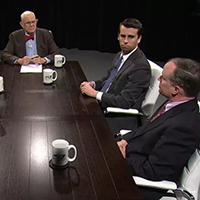The debt hardship
Published May 10, 2015
Editorial by Greensboro News-Record, May 9, 2015.
North Carolina paid off a debt of more than $2 billion in less than two years, state officials announced Tuesday. They held a ceremony where they cut up a symbolic credit card.
The state borrowed the money from the federal government to pay unemployment benefits when its own meager reserves quickly ran out during the recession. More time was allowed to repay it, but the state enacted a plan in 2013 to eliminate the debt early.
It wasn’t done without pain. About one-fourth of the debt was paid by a tax surcharge on employers. That surcharge will disappear once the state’s unemployment insurance reserves pass $1 billion.
The bulk of the cost was carried by unemployed workers, whose benefits were slashed or who didn’t qualify for help at all. And the lower benefits are permanent, not temporary.
Gov. Pat McCrory said the reduced benefits helped the state and even people who were out of work by forcing them to get jobs.
“We had some people who were not taking jobs that they needed to take,” the governor said this week.
He noted the state’s rapidly improving unemployment rate after the change was made.
He might be right, but might not. The state’s unemployment rate already had fallen from a high of 11.3 percent in March 2010 to 7.9 percent in June 2013, before benefits were cut. People were going back to work as jobs became available. The unemployment rate has continued to decline, at about the same pace, to 5.4 percent.
The changes in benefits did have one immediate effect: They earned a penalty from the federal government. Because of the cuts, it ended North Carolina’s participation in a program that paid extended benefits to workers after their state benefits ran out.
For the last half of 2013, this affected 170,000 North Carolina residents and cost them more than $700 million in benefits, according to the U.S. Department of Labor. That federal money would have fed North Carolina’s economy as it helped buy groceries and other necessities for the families of unemployed workers.
The federal program ended for the rest of the country on Dec. 31, 2013. North Carolina was the only state where it ended six months earlier. The governor and legislature made a costly mistake, and inflicted a double hurt, by not waiting another six months before cutting benefits.
Their cuts were also extraordinarily deep. At $228 a week, the average benefit paid in North Carolina ranks 47th in the country, according to U.S. Department of Labor data. And, because of strict eligibility rules and the short duration of benefits, only 20 percent of people who are out of work are receiving assistance. This helps explain why the state’s poverty rate has remained high and why median household income has barely moved up since the recession ended.
It is important to minimize debt, but sometimes debt is warranted. The governor now is proposing a $3 billion borrowing plan for transportation and other infrastructure. It was also worth extending debt a little longer to ease hardships for unemployed workers and their families.







